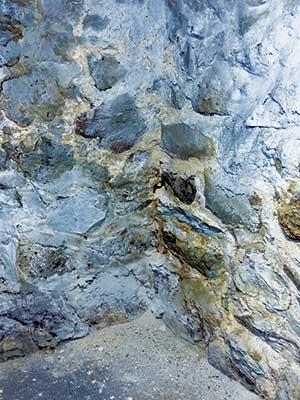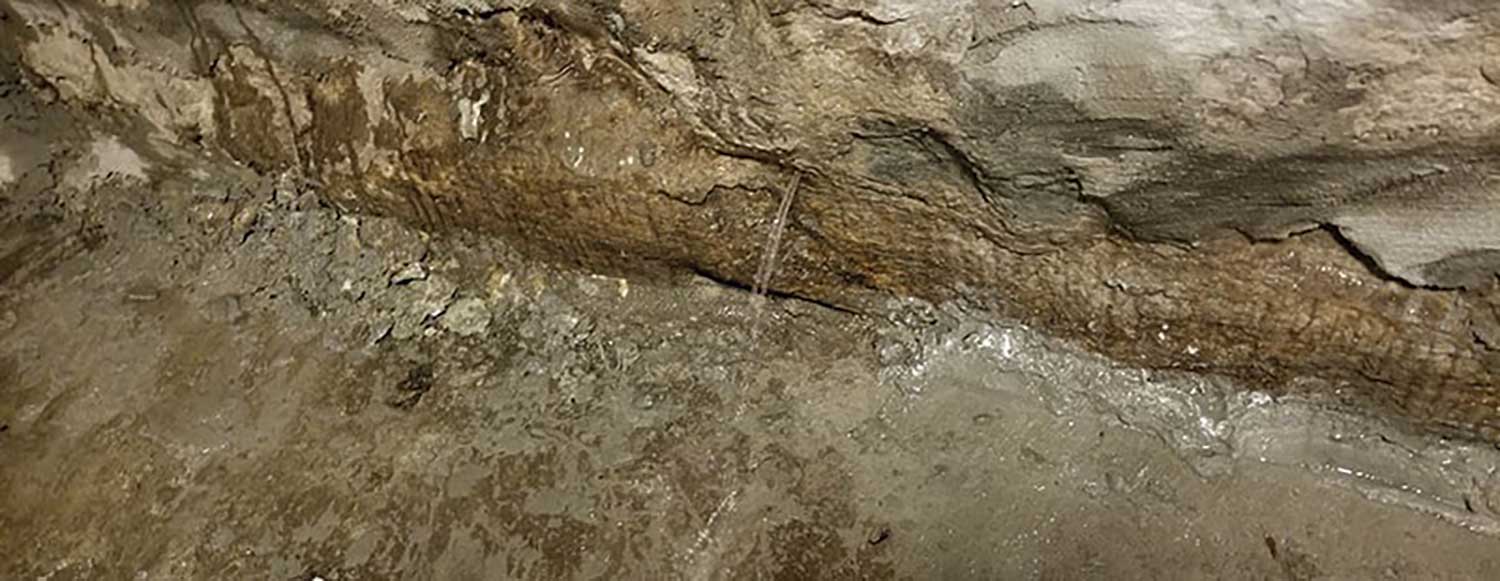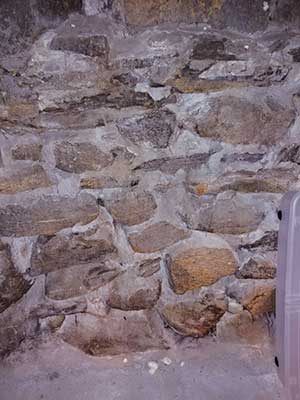

If you see …
If you observe dust or sandy material on the bottom of your stone foundations wall, your foundation is dusting or decaying.
Another sign is when you rub your finger or screwdriver over the stone foundation walls and this process creates powdering, or chips of mortar to fall.

Why does it happen?
The dusting and decaying of the mortar is a function of age. The components of the mortar you see in the walls was likely hand mixed by the masons building the foundation. The dusting is a result of the breakdown of the components of the mortar over time. One of these components is sand, which is what you see on the floor.
Once this process starts, it will accelerate and get worse over time. As dusting and decaying occurs, mortar strength deteriorates the movement in the stones due to frost and thaw cycles increases. Dusting is more than a nuisance; it is the first sign that the walls are starting to decay and it will lead to structural issues.
The Solution to your Foundation Dusting
Loose, cracked, or powdery joints are carefully removed from between the stones or wall surface. The walls are then prepared and new mortar is replaced throughout the foundation restoring its integrity. This will help keep rodents and snakes from entering, improve the air quality and reduce water infiltration and overall energy efficiency of your home.

If you see…
Water coming in between the stones when it rains and/or where the stones and the floors meet after a rain
Dark or damp patches throughout the walls of the basement
Excessive humidity and mold/mildew spores growing on stored items in the basement
Corners of the basement tend to be the most common areas affected
Why does it happen?
Stone foundations were never intended to be 100% watertight, but that doesn’t mean you should expect to need a wetsuit to go into your basement. As stone foundations age, the mortar that holds the stones together breaks down. This breakdown creates channels in between the stones for water to find its way from the soil into your basement.
Once water finds a way in, it accelerates the deterioration of the foundation. This opens pathways for rodents, snakes, cold air, moisture, and odors from organic material breakdown in soils to enter the basement. Water in the home can be both destructive to home as well as your health. Water in the basement promotes growth of mold and mildew, and puts an increased strain on heating and cooling systems of your home.
The solution to your Water Infiltration
The best line of defense against water infiltration is to address the mortar joints. Loose, cracked, or powdery joints are carefully removed from between the stones or wall surface. The walls are then prepared and new mortar is replaced throughout the foundation restoring its integrity. Areas of significant water infiltration may be addressed with oakum soaked in a waterproofing fluid that is worked deep into the stones to create a barrier for water. These areas may also be addressed with a crystallized quartz-based masonry material that’s designed specifically for these applications.
Don’t get fooled by vapor barrier systems. They will still allow water to come through the foundation but direct it to a sump pump. While it stops water from entering the middle of the basement, it does not stop the deterioration of the walls. This also accelerates mortar decay by creating a high moisture environment that is trapped and not visible to the homeowner.

If you see…
Mouse droppings and/or snake skins
Your cat presenting you the “catch of the day”
Previous unsuccessful attempts to control infestation by homeowners or professionals
Food stored in the basement that has been chewed through and eaten
Why does it happen?
Your basement is cool in the summer and warm in the winter - a perfect place for rodents and snakes. A mouse can fit in a hole the size of a dime. Stone foundations that have gaps in the mortar allow rodents and snakes from the outside to easily access the inside. Mice, rats, snakes, and other critters seek shelter to “grow their families” and find food and water sources. A single female mouse can produce a litter every 19 days and can have 60 babies a year. The offspring then start to reproduce causing a mouse problem to turn into a mouse infestation.
A pest control company can be great at “catching” your unwelcome guests, but stopping them from coming in should be your ultimate goal. Foundations that have loose, crumbling, or missing mortar provides easy access for pests and should be repaired in order to keep them outside.
The Solution to your Pest Infestation
Loose, cracked, or powdery joints are carefully removed from between the stones or wall surface. The walls are then prepared and new mortar is replaced throughout the foundation restoring its integrity. In the areas where the stone meets the wood sill of the house, a special rodent-proof material is applied to bridge any gaps between the masonry material and the wood. These methods help keep rodents and snakes from entering, reduce water infiltration, improve the air quality and overall energy efficiency of your home.

If you see…
Drafty or damp basement
Cold air and draftiness on the first floor living space especially on outside walls and where the floor and the wall meet.
Increased energy costs year over year
Continual repairs on your heating and cooling system
Why does it happen?
Your basement should be a controlled environment with a stable temperatures and minimal moisture. Heating systems, pumps, cooling systems, and hot water tanks rely on low humidity and consistent temperatures to work efficiently. Gaps in the stone foundation reduces the effectiveness of the home’s thermal envelope and increases the costs to keep your home comfortable. Also, gaps in the foundation cause increased humidity which increases wear and tear on all the systems downstairs. These two factors make operating your home very expensive, and you can find yourself replacing major systems much earlier than anticipated.
The Solution to your Energy Efficiency Issues
Loose, cracked, or powdery joints are carefully removed from between the stones or wall surface. The walls are then prepared and new mortar is replaced throughout the foundation restoring its integrity. Missing mortar need to be replaced with new mortar… Spraying the yellow foam from a can in the gaps only masks the true problem. Insulation foam has no structural strength and does not help keep the wall sturdy and airtight. When properly installing new mortar in the deteriorated sections, it will help keep rodents and snakes from entering, reduce water infiltration, improve the air quality and overall energy efficiency of your home.
A-1 Foundation Crack Repair, Inc. is a fully registered home improvement contractor. Contact us today to talk to a knowledgeable, stone and block foundation repair specialist.
Call Us Today at (877) 989-9145
A-1 Foundation Crack Repair, Inc. is a fully registered home improvement contractor. Contact us today to talk to a knowledgeable, master waterproofing professional.